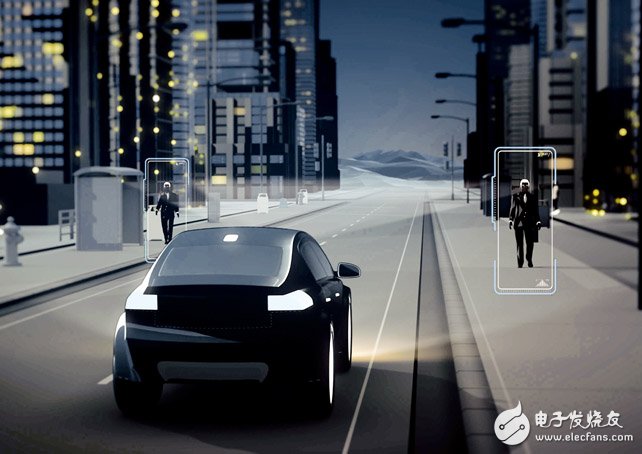Implementing the Internet of Things into the real world, the Internet of Things has become a variety of applications, such as intelligent transportation, smart homes, and smart factories. It covers almost all the scenes of human life, and its scope is comprehensive and broad. According to estimates by major research institutions, it seems that smart factories have the highest output value and smart traffic growth is the strongest.
The application of the Internet of Things in the field of intelligent transportation is in full swing, including the technology giant Google, as well as international heavyweight car manufacturers such as Tesla, Toyota, Mercedes-Benz and BMW, all of which have invested in the development of smart cars and driverless cars. In 2016, the National Development and Reform Commission and the Ministry of Transport jointly issued the “Implementation Plan for Promoting “Internet +†Convenient Transportation to Promote Intelligent Transportation Developmentâ€, which is the first time the country has issued an overall framework and implementation plan for intelligent transportation.

The development of the Internet of Things has penetrated into the development of thousands of intelligent transportation.
Yuan Peng, deputy director of the Department of Science and Technology of the Ministry of Transport, believes that technological innovation is the core of intelligent transportation. New consumer demand can be guaranteed and realized through a new generation of information technology. Human and cargo transportation can also achieve precise docking. Traffic is developing in a comprehensive direction, and demand is constantly being created or upgraded."
In terms of market, according to the well-known research institute Gartner, from the 2015 to 2020 five-year period, the main application categories of the Internet of Things have the strongest growth momentum of automotive transportation applications, with a compound annual growth rate of 67.2%. Followed by factory automation and energy 44.3%; in addition, medical fitness, smart home and other general consumer market annual compound growth rate of 32.4%; the last is agriculture, retail, etc., will advance at a rate of 24.1% per year.
Under the spur of the acceleration of urbanization, the increasing demand for “smart†and the country’s emphasis on infrastructure investment in transportation, in 2012, the number and total amount of large orders of more than 10 million yuan increased significantly. According to China Transportation Technology Network, in 2012, there were 235 orders with an amount of more than 10 million yuan, a year-on-year increase of 26%. The amount of 10 million yuan was 6.81 billion yuan, a year-on-year increase of 46%, accounting for 41.7% of the total annual project, an increase of 5.7. Percentage points. There are 7 billion-dollar singles, 5 of which use BT and other financing models.
In the "networking" classification, the deputy secretary-general of the China Automotive Engineering Society and the Secretary-General of the Intelligent Network Alliance Automobile Alliance, Wei Weijie, revealed that the Ministry of Industry and Information Technology has entrusted the China Automotive Engineering Association to further Specific energy-saving and new energy application technology routes.
She believes: "Specifically, we divide 'networking' into three levels. The first level is the interaction of network-assisted information, similar to the current information service, which can be achieved through 3G and 4G networks. The level is the network-based collaborative sensing, through the V2X to complete the information exchange between the vehicle and the outside world, to help the vehicle to make decision-making and control. The third level is the network-based collaborative control, still through V2V, V2I, etc., to achieve coordinated control of the vehicle and the outside world. The second level is different, the third level puts higher requirements on the implementation and reliability of transmission. In addition, unlike the intelligent containment structure, the network connection is three levels.
In cross-border cooperation, Wang Xiaojing, chief engineer of the Highway Science Research Institute of the Ministry of Transport, believes that new technologies such as smart driving, big data and the Internet are like “double-edged swordsâ€. While improving traffic safety and efficiency, there are certain risk. Therefore, when confronting these new technologies with a positive attitude, we must also think about how to avoid disadvantages. For example, pay attention to data security issues, especially the use of data must have rules, to ensure the country's information security and the lives and property of ordinary people.
In general, the future car will not only drive automatically, but also collect the latest information in real time through the cloud. There is unlimited development potential, which will greatly change the street appearance in the future. Intelligent transportation connects all transportation participants such as infrastructure, vehicles, travellers and service providers through the information network and the value chain. The traffic information will flow freely among various stakeholders according to the principle of market guidance and value drive. And will create a new application service model to promote the formation and development of intelligent transportation industrialization.
Communication Cable,Screen Communication Cable,Pair Cable,Intrinsic Safety Cable
Baosheng Science&Technology Innovation Co.,Ltd , https://www.bscables.com